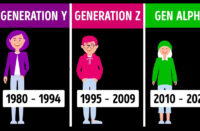‘I’m a Barbie Girl, in a changing world’
- Brand value of top 25 toy brands totals US$9.4 billion, almost half from Lego
- Lego is the most valuable toy brand and the second most powerful brand globally
- My Little Pony is the fastest growing toy brand this year with a 40% rise in value
- Barbie enjoys 20% growth after focusing on improving diversity and equality
Every year, leading branded business valuation and strategy consultancy Brand Finance puts thousands of the world’s top brands to the test. They are evaluated to determine which are the most powerful and the most valuable by country, by industry and against all other brands worldwide. The most valuable toy brands can be found in the Brand Finance Toys 25.
The total brand value of the table is US$9.4 billion. The United States is home to 16 brands in the table, contributing US$3.5 billion to the overall sum. Japan follows with seven brands and a national value of US$1.2 billion. Although Denmark is home to only one brand in the table, it contributes US$4.5 billion to the total, higher than the total brand value of the United States’ 16 brands. Canada finishes off the table with one brand valued at US$132 million.
Denmark’s Lego is by far the most valuable toy brand this year, with a brand value of US$4.5 billion, making up half of the table’s total brand value. It is the world’s second most powerful brand with an AAA+ rating. Disney overtook Lego as the world’s most powerful brand after the release of Star Wars VII: The Force Awakens last year. Despite that, Lego shows continual growth, with films and television shows playing a large role in its success – The Lego Movie was a major driver of value, and the brand’s rapid expansion in China and ongoing growth in core western European markets have also had a strong positive impact.
My Little Pony is the fastest growing toy brand this year, enjoying 40% growth to a value of US$141 million. The television show ‘My Little pony: Friendship is Magic” re-established interest in the brand just as The Lego Movie enhanced Lego’s. The My Little Pony movie is set to be released in October and, should it follow in Lego’s footsteps, the brand can expect to enjoy further success in the future.
Barbie is ranked third in the table, with a brand value of $571 million after an impressive 20% increase. Manufacturers are increasingly grappling with social and economic pressures to think beyond the conventional marketing of dolls and action figures. Barbie has faced criticism on the grounds of ethnic diversity and the negative image the dolls convey. The brand addressed these concerns with the launch of new Barbie dolls in seven different skin tones and dolls with ‘real’ body shapes and sizes. This represented a significant departure from Barbie’s traditional marketing strategy but the brand has recognised that times have changed and it must evolve in order to stay competitive.
Play-Doh and Nerf both enjoyed a rise in brand value, growing 6% and 11% to US$143 million and US$231 million respectively as parents focus on keeping children their children physically as well as mentally stimulated. Monopoly’s value fell 16% this year to US$140 million, although the drop in value is at least partly because of growing pressure from competing products such as independent board games.
Growing income levels in China mean parents may be swayed towards more expensive, official toys and away from cheaper counterfeit goods. Overall, the toy industry should look to China for future expansion and growth. As Lego and My Little Pony have shown, what is most important is interaction with customers through digital and entertainment media. It is vital that toy brands embrace this in order to continue playing the game.







